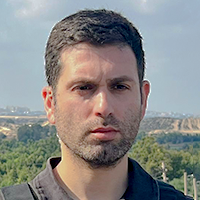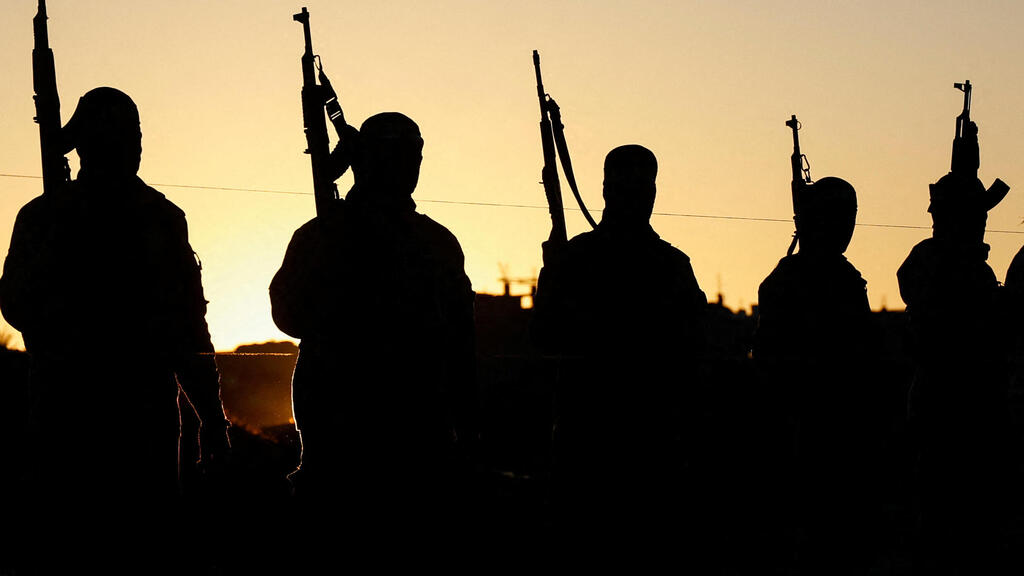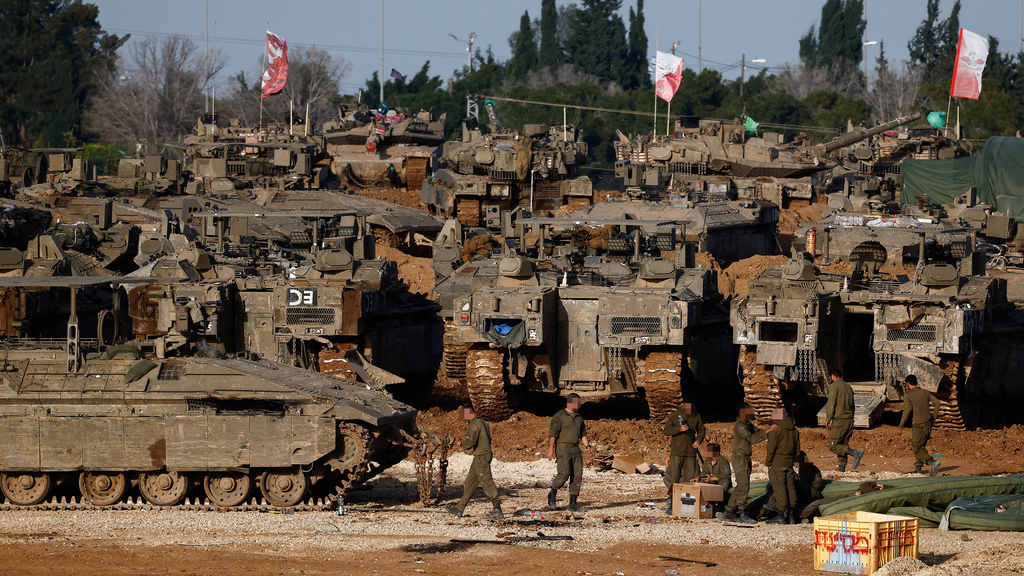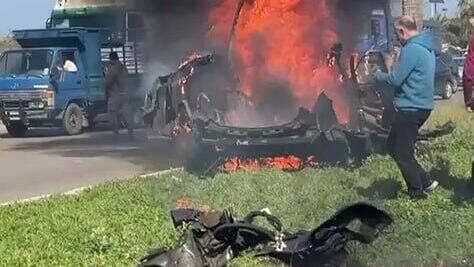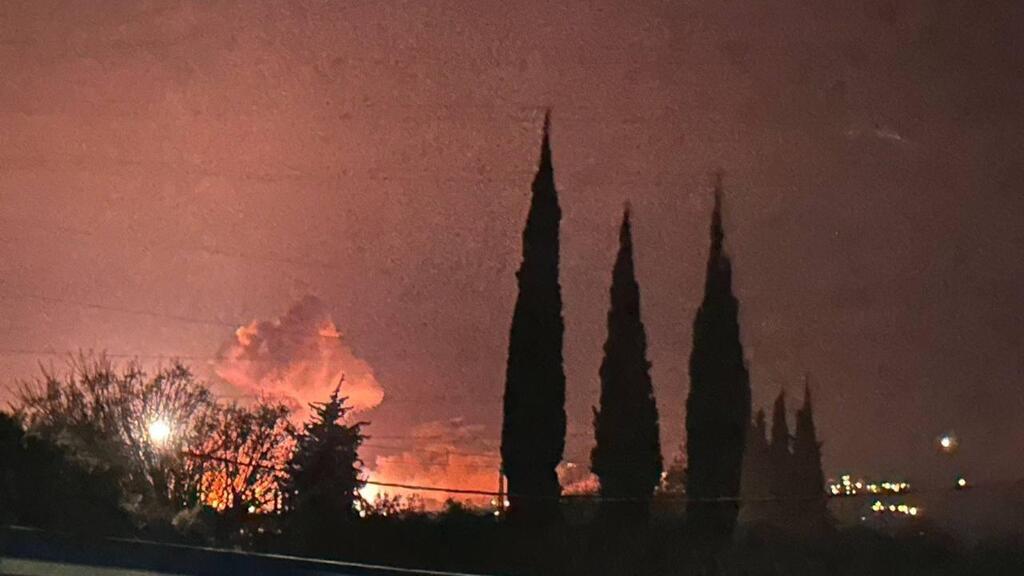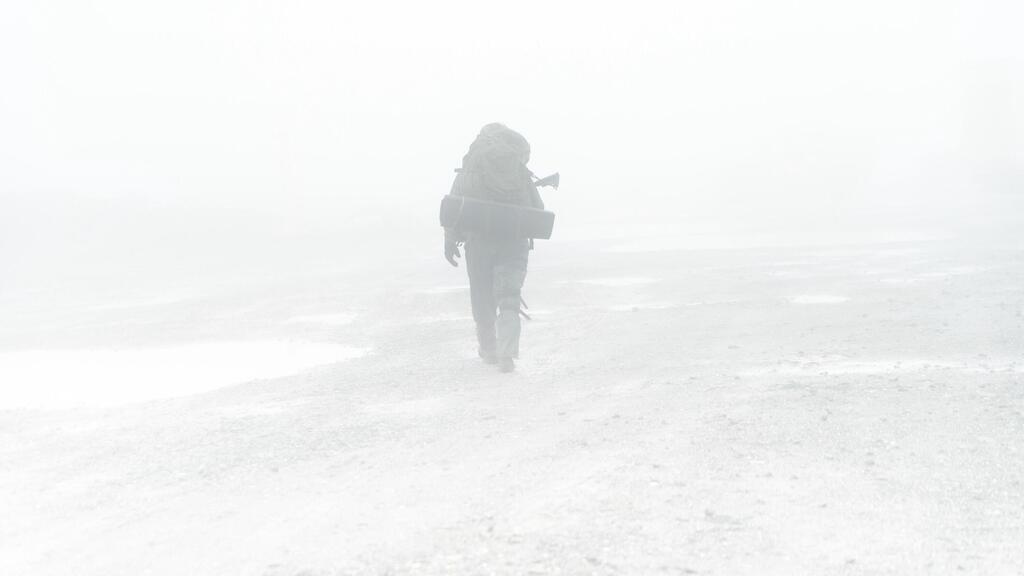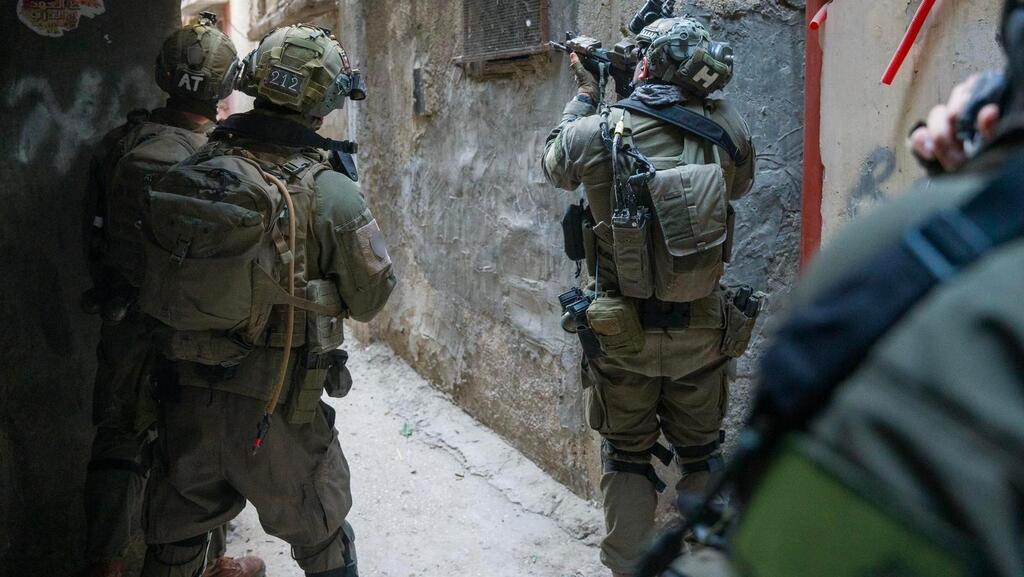The only way to avoid losing the war is to keep up the charade and pretend it is still going on, although it ended a while back.
The IDF will not return to its offensive on Gaza with 30,000 troops, it will not operate on the ground in Lebanon and even its counter-terrorism operation in the northern West Bank is winding down.
What has thus far been achieved is in a holding pattern, waiting for the government to decide on its policy. And since that has not happened, Hamas has been rebuilding its strength in Gaza, making any notion that the terror group would be destroyed a far-off dream.
7 View gallery


Armed Hamas terrorists in Khan Younis during the release of hostages
(Photo: Abdel Kareem Hana / AP)
Israel has been artificially prolonging the war. The national and humane desire to see all of the hostages held in Gaza released and returned has hidden the fact that, since August, the IDF has not engaged in fighting against Hamas.
Since then, Israel operated on the ground across the border with Lebanon and dealt devastating blows to Hezbollah's leadership, the Assad regime in Syria fell and the Shiite axis was significantly weakened.
Ahead of the start of negotiations on the second phase of the cease-fire and hostage release deal in Gaza, that would hopefully see the return of dozens of captives and officially end the war, Ynet and its sister publication Yedioth Ahronoth takes a look at the multi-front war, Israel's achievements and its failures.
The war in Gaza
In the second week of the war, Hamas leaders made a dramatic decision the results of which are now evident. They refused to bask in the victory following their massacre of Israelis. They were more concerned that the master plan devised a year earlier had failed.
Hezbollah did not join the fight. The Lebanon-based terror group left Hamas to fend for itself and only contributed daily shelling on the Galilee. Hamas leaders instructed their 30,000 strong force to withdraw amid the Israeli ground offensive, to hide among the civilian population and only attack IDF troops when the opportunity arises.
That was when the guerilla war began. Small squads of Hamas terrorists, taking advantage of weaknesses in the military defenses. Despite hundreds of soldiers killed and thousands more injured n the months of fighting, Hamas did not launch any significant attack against the troops of the scale that they had trained for, and they were able to reach anywhere they wanted in the Strip.
Hamas maintains a force of thousands of armed fighters that were there before the war and hundreds of new recruits have joined
The IDF caused devastating harm to the Hamas military industry in dozens of places, training camps, storage facilities and production complexes. It destroyed a considerable amount of the underground infrastructure and command centers but did not eliminate the fighting force, including many of the commanders, who remained alive.
Trucks deliver humanitarian aid to Gaza
The result today is that Hamas maintains a force of thousands of armed fighters that were there before the war and hundreds of new recruits have joined, including in command positions. Thousands of kilometers of tunnels remain undiscovered beneath Gaza, including near the border with Israel and, above all else, Hamas still maintains its original goal to destroy Israel.
Senior IDF commanders consider Hamas forces a threat, even now a year and four months after the war. They see the terror group reorganize and renew its complete control over the Strip and its residents, using every opportunity to regroup militarily and otherwise.
Government faces critical choice between alternative to Hamas rule in Gaza or years-long war in the alleyways of its refugee camps
Israel's preoccupation with the latest suggestion that Gazans would chose to leave the Strip, as U.S. President Donald Trump has suggested, could be revealed to be a smoke screen for its military and political defeat in the war. Israel did not destroy Hamas, not its military and not its ability to rule over Gaza, which the government defined as a goal of the war. It is nearing its humbler aim, the return of the hostages, if Phase II of the cease-fire deal is implemented.
This reality demands that the government makes critical choices which would come at a heavy cost: Either finding an alternative to Hamas rule over the 2 million Palestinians living in the Strip, or accepting a years-long war in the alleyways of Gaza's camps and cities.
The fact that the IDF was preparing a buffer zone along the border and the daily clips showing troops firing toward Gazans approaching the area, seems like a prelude to what may come next and a confirmation that Israel has perhaps succeeded in preventing another Oct. 7 massacre in the foreseeable future, but has failed to eliminate Hamas.
The war against Hezbollah in Lebanon
In the north IDF troops withdrew from more villages in South Lebanon on Sunday and local residents were allowed to return to their homes close to the Israeli border. There is still a discussion about Israel's demand to hold on to five strategic positions and the withdrawal of all troops may again be delayed.
On instruction from the government, forces continue to attack Hezbollah operatives who are violating the terms of the cease-fire deal and on Monday, Israel assassinated a senior member of Hamas operating in South Lebanon which it said was planning attacks. Overnight the IAF bombed Hezbollah weapons storages in the Beqaa Valley once again.
But the extent of the blows sustained by Hezbollah must be measured over time, not only in the ability to prevent it from rebuilding its military might but also in the deterrence established by Israel after it was eroded in the Hamas massacre.
A political solution must be added to the military achievements, the resilience of the population and the diplomatic engagement of the Americans and the French in support of a Lebanese leadership that is not aligned to Hezbollah.
The Syrian front
In Syria, IDF soldiers seek shelter from the cold in Assad-era military bases and homes of local residents. Their activities are limited and their missions are restricted to self defense or the collection of weapons captured in the area.
Like the forces still deployed in South Lebanon, hundreds of fighters only serve as a reminder of the empty declarations of politicians who threatened the gates of hell opening on Gaza.
In order to operate effectively in the Strip, the IDF will need the troops who are on the Golan as well as those deployed to the West Bank. The active service forces are stretched to the limit and the reserve forces even more so.
The Israeli Air Force is preventing hostile forces on the Syrian Golan from nearing the border with Israel and attacking Hamas weapons storages south of Damascus. Thus far, the new Syrian regime has not deployed its armed forces to the area.
IDF counter-terrorism operation in the northern West Bank included more headlines and public statements than real action
Fighting West Bank terror
The IDF counter-terrorism operation in the northern West Bank included more headlines and public statements than real action, compared to previous operations in Jenin and Tulkarm. Thousands of soldiers were invested in the killing of 65 terrorists thus far.
With pressure from the government the military went after armed terrorists and destroyed many structures that they had used by them. Some troops remained in the camps to capture or prevent the return of terrorists who escaped.
The primary goal was to block any momentum or initiative of the local terror groups egged on by the release of Palestinian prisoners who were to be released as part of the cease-fire deal in Gaza.
IDF forces operate in Tulkarm
(IDF)
Troops did confiscate hundreds of weapons and arrested hundreds of wanted suspects but his operation too will have an expiration date and its success or failure will be determined over time.
Get the Ynetnews app on your smartphone: Google Play: https://bit.ly/4eJ37pE | Apple App Store: https://bit.ly/3ZL7iNv
"We don't use tanks here because there is no need, nor is there need for artillery. We don't use live fire when we enter local homes and we are working along side the local population," one commander told Ynet. "In one village we arrested 30 suspects and uncovered three explosives labs. In the first two weeks of the operation, we did not have any armed confrontation because the terrorists fled."
Compared to Gaza the number of troops invested in the West Bank has yielded fewer results. The military chiefs will have to consider how best to deploy the forces, especially if there is a chance of renewed fighting in Gaza.



